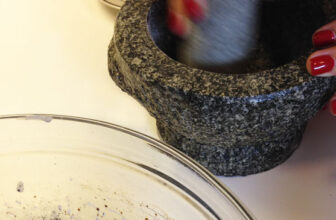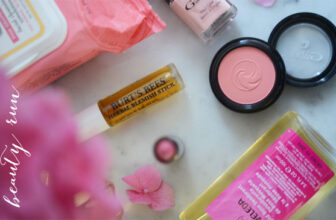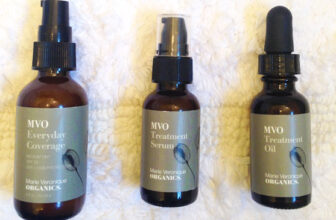
A well-known brand name for Vaseline is Vaseline. It is a low-cost skin care product that can be found in most pharmacies.
Vaseline’s potential advantages and disadvantages are discussed in this article. In addition, he provides some applications for Vaseline and instructions on how to use it on your face.
Can Vaseline be applied to the face?
Vaseline is a face moisturizer that many people can use safely. Vaseline can be applied by people to alleviate short-term skin issues like dryness and irritation. Vaseline can also be used as a moisturizer for a long time.
Advantage:
The advantages of applying Vaseline to your face are discussed below.
Moisturizing:
Vaseline is an oily product that adheres to the skin’s surface as an oily film. Skin stays moist and smooth thanks to this oil film that holds in moisture.
Vaseline, according to a review published in 2016, stops more than 98% of water loss through the skin’s outer layer. Trans epidermal water loss (TEWL) is the term for this kind of water loss. Mineral oil and lanolin, on the other hand, are similar oil-based moisturizers that reduce TEWL by about 20% to 30%.
Put physical barriers in place:
A physical barrier is formed on the skin by the same oil film that keeps moisture in. This barrier shields the skin from harsh elements and environmental pollutants that harm it.
Risk:
Vaseline is generally safe to use on the face, but not everyone should use it. The potential dangers of applying Vaseline to your face are listed below.
Biggest lapse:
Although Vaseline aids in the retention of skin moisture, some experts contend that it may also hold dirt and oil. People who are prone to acne warn that applying Vaseline to the face may cause pimples to appear.
Vaseline, on the other hand, does not clog pores and is non-comedogenic, according to the company’s website.
However, the greasy feeling that Vaseline leaves on the skin may not be appealing to people who have oily or acne-prone skin.
Irritated skin:
There were no reports of severe allergic reactions to petroleum jelly, according to a 2016 review. Skin reactions that are only mild are also uncommon.
What to use?
AAD recommends applying Vaseline to skin that is slightly damp. As a result, it’s best to use it after taking a bath or washing your face.
Vaseline is typically applied with the fingertips of the user. To avoid spreading bacteria to the skin on your face, wash your hands thoroughly with soap and water before applying the product.
You can then apply a meager layer of Vaseline to the dry region of the skin, taking into consideration staying away from the visual mucous films.
Use:
There are numerous applications for Vaseline in skin care products, including:
Comfort for Dry Skin:
Vaseline should be applied to dry parts of the face, like the lips and eyelids, according to the AAD.
Relief from itching:
Dry, flaky, and irritated skin is the result of a skin condition known as atopic dermatitis.
When treating atopic dermatitis, dermatologists frequently recommend petroleum jelly or similar ointments. These ointments keep moisture in the skin, reducing dryness and skin flaking that causes itching.
Assists in wound healing:
Petroleum jelly, according to the AAD, can aid in the healing of minor cuts, scrapes, and other cuts. Vaseline keeps the wound moist and prevents it from drying out and scabbing, which typically speeds up the healing process.
By accelerating wound healing, Vaseline can also prevent the formation of large, deep, or itchy scars.
Together with other skin treatments, sealed:
Before applying Vaseline as a moisturizer to the skin, serums and other active ingredients can be applied. Other skin care products have more time to work with the skin because Vaseline helps set them.
Uses in cosmetics:
Certain individuals use Vaseline on their cheeks rather than blush or highlighter.
Alternative suggestion:
consists of a variety of face-appropriate moisturizing ingredients. They typically fall into one of the following three categories: emollients, humectants, and occlusive agents.
To increase the moisturizing power of their products, skin care manufacturers frequently combine multiple types of moisturizers.
Below are two types of moisturizers and some examples of each.
Obstruction:
Petroleum jelly and other occlusive substances form a barrier on the skin to prevent water loss.
Lanolin and mineral oil are two additional common occlusive moisturizers. However, these ingredients may be more likely to cause allergic reactions, according to a 2016 review.
Moisturizing:
An ingredient that draws moisture into the skin by binding to water molecules is known as a humectant. Hyaluronic acid and glycerin are two common moisturizers with hydrating properties.
Conclusion:
This product is generally safe to apply to the face unless the person is allergic or sensitive to petroleum jelly. Vaseline can be used for a variety of purposes, including increasing wound healing, and enhancing skin hydration.
Because it is an occlusive humectant, Vaseline keeps moisture in the skin. Vaseline can be used by itself or in conjunction with other skincare and moisturizers. Petroleum jelly should be stopped immediately if it causes skin irritation.






